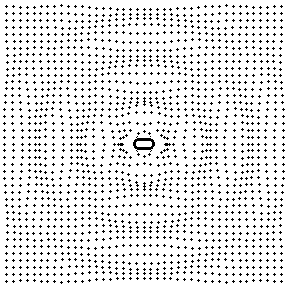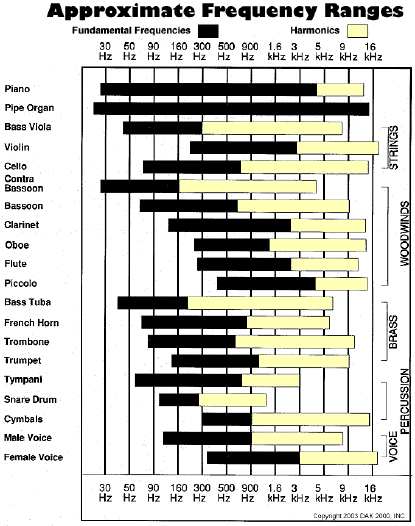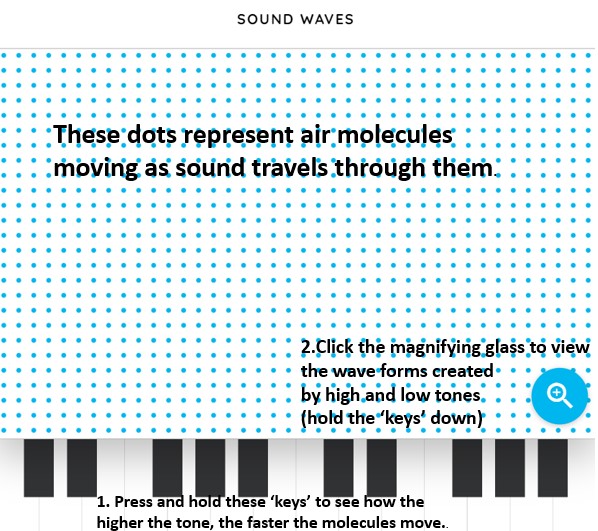According to the Webster's Dictionary, sound is:
a: a particular auditory impression; the sensation perceived by the sense of hearing;
b: mechanical radiant energy that is transmitted by longitudinal pressure waves in a material medium (as air):
c: is the objective cause of hearing
For the purposes of this course, we will use the second definition - energy transmitted by waves through the air.
The graphic at the right illustrates this wave motion.
At the center is a tuning fork that is vibrating. The surrounding air molecules (represented by + in the graphic) transmit this vibration. When this energy reaches our ears, we perceive this as sound.




